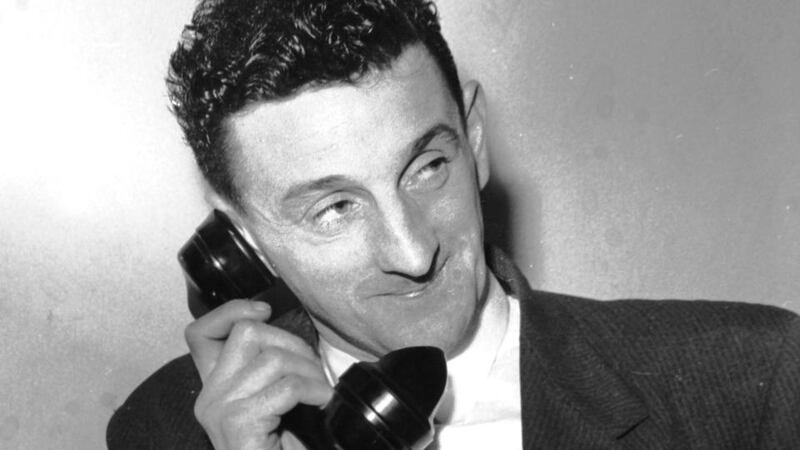In John B Keane's first and most famous play, Sive, which he wrote when he was a 30-year-old publican recently returned to his native Listowel, in Co Kerry, from a period as an emigrant in England, the evil matchmaker who sells a young girl to an old farmer is not criticised. He is cursed. A Traveller, Pats Bocock, puts a hex on the grasping, cynical Thomasheen Seán Rua: "You are the bladder of a pig, the snout of a sow; you are the leavings of a hound, the sting of a wasp. You will die roaring."
This is not subtle psychological drama. It is the voice of a pre-Christian world where words are magical weapons. Writing 20 years later about what was on his mind in 1959, Keane remarked that, “having been weaned on a fairly consistent diet of myths and legends, it was inevitable that I should endeavour to dramatically document the affairs and aspirations of the outlandish denizens peculiar to the remote countryside of my father’s people . . . The Celtic or pagan part of my own make-up has always been drawn more to the contrary and the macabre.”
Keane began his dramatic career at a time when Ireland, under the tutelage of TK Whitaker and Sean Lemass's modernising programme for economic expansion, was setting out on its own social and economic revolution, one that would sweep away the last vestiges of the "outlandish" premodern mindset that Keane explored. Sive, in some respects, captures the tensions of this great change. Its central character, Mena, precipitates the tragedy by attempting to marry off the eponymous girl, who is her husband's "illegitimate" niece.

At the heart of the drama is a clash between the older, more traditional extended family and the new, modern nuclear family that Mena desires. But what gives the play its raw power is that this sociological drama is fused with Keane’s “pagan” worldview, in which the forces of darkness and of light, the devils and the angels, are at war.
The force that Keane unleashed on the Ireland of the late 1950s was one against which it had no protection, because it came not from the new ideas of urban intellectuals but from the depths of a dying tradition.
In another society a play like Sive could have been dismissed as a wild melodrama, complete with scheming money men and impossibly innocent endangered virgins. In an obvious sense it derives from the great Victorian melodramatist Dion Boucicault. But it fills this borrowed form with a vivid north Kerry style forged by the neglected genius George Fitzmaurice and carried on by Keane's contemporaries Bryan MacMahon and Brendan Kennelly.
The mix of melodrama and myth in Sive was a cocktail so powerful that it blew the head off a country that was tired of a stifling orthodoxy that offered the young people of Keane's generation nothing more exciting than the boat to England.
It was entirely appropriate that Sive should have been rejected by the Abbey Theatre – then mired in the inertia of orthodoxy – yet understood by the audiences that flocked to see it in parish halls all over Ireland.
Sive, the novelist Christy Brown wrote, "appeared at a time of theatrical stagnation in Ireland when . . . the name of the Abbey Theatre had become a dry, dusty sound in many a throat, rather like a death-rattle that refused to stop . . . Into this enclosed arid wilderness Sive roared like a strange savage incantation, a raw wind from the broader, wilder spaces of the land, with its terrible immemorial message of love sold for silver pence, the casual betrayal of principle to the blind dictates of custom."
You can read more about John B Keane in the Royal Irish Academy's Dictionary of Irish Biography; ria.ie









